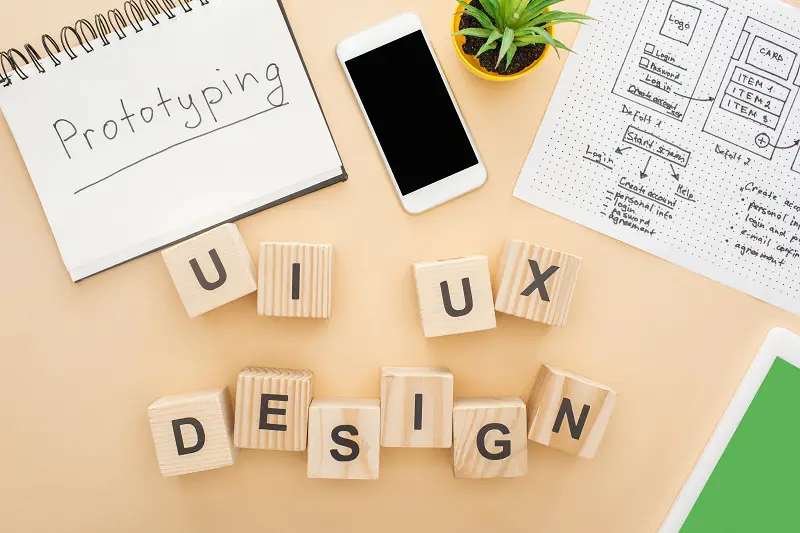White space, also known as negative space, is an important component of user interface (UI) design. It’s the empty area between elements on a screen that can help create visual harmony and balance in your designs. It may seem like a minor detail but white space plays an essential role in making sure users have a positive experience when interacting with digital products.
In this blog post, we’ll uncover why white space is essential for user interface design. Additionally, helpful tips will be provided on how to use it proficiently, and several examples of leading brands that have successfully taken advantage of its potentiality in order to craft gorgeous interfaces. Our aim is to provide you with the data needed so that you can create extraordinary experiences for your customers!
1. What is White Space in UI Design and Why Is It Important
White Space in UI Design, often referred to as negative space, plays a pivotal role in shaping the overall user experience. It is essentially the unoccupied space surrounding various elements of a design, such as text, images, and graphics, which helps in creating balance, structure, and hierarchy. The significance of incorporating white space in a user interface cannot be overstated, as it offers numerous benefits that enhance usability and aesthetic appeal. By strategically utilizing white space, designers can draw attention to specific areas, improve navigation and readability, and provide users with a seamless and intuitive experience. A well-executed white space design allows for clear visual communication, ensuring that the user is not overwhelmed by excessive information or cluttered elements. Moreover, it fosters a sense of elegance and sophistication, emanating a sense of professionalism and trustworthiness. An abundance of prominent examples can be observed, demonstrating the artful implementation of white space in UI design and showcasing its power in effectively augmenting user engagement, satisfaction, and overall perception of a brand or product.
2. Types of White Space in UI Design
In the vast world of SaaS UX design, the art of white space emerges as a crucial component in creating an exceptional and visually appealing user experience. White space, often referred to as negative space, is the empty area between objects or components; it can be likened to the invisible threads that weave together to form a harmonious tapestry. As designers endeavor to create a seamless and inviting interface, they must master the delicate balance between the different types of white space, which include passive and active white space. Passive white space serves as a mere visual cushion, a subconscious natural breather, allowing users to engage with elements more effortlessly. On the other hand, active white space is strategically employed with a more sophisticated intent – to guide users’ attention, establish hierarchy, emphasize crucial information, and encapsulate the overall branding aesthetic. When wielded deftly, white space becomes an unexpectedly potent tool in crafting an elegant, efficient, and memorable SaaS UX design.
3. How to Use Negative Space to Create Balance and Clarity
By incorporating adequate negative space, designers can strike a harmony between layout elements, allowing for improved readability, better visual hierarchy, and increased user engagement. To leverage the power of negative space effectively, it is essential to maintain a consistent margin around individual components while ensuring that the space between elements communicates their relationship and establishes a clear flow of information. Furthermore, utilizing grid systems, typographic scales, and rhythm-based layouts can significantly contribute to defining appropriate white space proportions in your UI designs. Examining examples of successful white space utilization, such as Google’s Material Design, Apple’s Human Interface Guidelines, and some of the leading digital products and platforms can serve as valuable inspiration for achieving the desired balance and clarity that elevate the overall user experience. By mastering the art of white space in UI design, designers become adept at creating visually pleasing, easily navigable, and effective interfaces that resonate with users, ultimately contributing to the digital product’s success.

4. Examples of Effective White Space Usage in UI Design
UI design is incomplete without the power of white space. This simple yet effective technique helps create an attractive and inviting user experience, while also encouraging optimal usability. By tapping into this subtle art form, you can transform your interface in a matter of moments and appeal to users on a whole new level! When used effectively, white space can guide the user’s eye, emphasizing the important elements on the page and allowing them to navigate with ease. One remarkable example of white space usage in UI design includes Google’s minimalistic homepage, where its iconic logo and search bar hold center stage, surrounded by ample white space to create a sense of focus and simplicity. Another breathtaking example is Apple’s website, which is well-known for featuring bold imagery and typography, balanced by generous white space to evoke a premium feel. Additionally, Medium’s online publishing platform employs white space to enhance the readability of articles, giving adequate breathing room to the text and allowing readers to digest content effortlessly. Lastly, the widely popular note-taking app Evernote employs a clean and clutter-free design with plenty of white space to promote functionality and ease of use, making it an indispensable tool for millions of users worldwide. These powerful examples showcase the potential of white space in elevating UI design, creating visually stunning and cohesive experiences that captivate and engage users.
5. Tips for Incorporating White Space into Your Designs
The Art of White Space in UI Design is a crucial aspect often overlooked by designers, but mastering it can significantly improve the overall user experience. Through the incorporation of white space, we enhance the visual hierarchy, reduce cognitive load, and encourage users to focus on the most important elements of our designs. White space doesn’t necessarily mean empty or unused space but instead refers to the strategic placement of elements, giving them room to breathe and allowing users to better process the information presented. To effectively incorporate white space in your designs, consider starting with a clear grid system, which will help achieve a clean and organized look. Additionally, pay attention to the alignment and proximity of elements, ensuring that related items are grouped together while separate items are given ample space apart. Typography also plays a pivotal role in white space management. Choosing an appropriate font size, line height, and letter spacing will not only improve readability but also contribute to a harmonious balance of white space within your design. Lastly, don’t be afraid to experiment with different amounts of white space to find the perfect balance for your specific UI, as varying degrees can yield dramatically different yet effective results. By adhering to these principles and continuously honing your white space skills, you’ll be on your way to creating more efficient and visually appealing user interfaces.
Final Words
In conclusion, the power of white space in UI design is undeniable. When used correctly, it can transform a user’s experience from tedious to captivating and make navigation intuitive. As designers, we must strive to incorporate white space into our designs strategically and thoughtfully so that users are able to easily process the information on the page while being visually stimulated by its beauty. With these tips for incorporating white space into your designs as well as examples of effective usage within UI design projects, you should now have all the tools necessary to start creating beautiful interfaces with ample amounts of breathing room!




